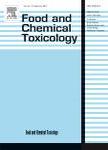版权所有:内蒙古大学图书馆 技术提供:维普资讯• 智图
内蒙古自治区呼和浩特市赛罕区大学西街235号 邮编: 010021

作者机构:Univ G dAnnunzio Ctr Adv Studies & Technol CAST I-66100 Chieti Italy Univ G dAnnunzio Dept Med & Aging Sci I-66100 Chieti Italy Univ G dAnnunzio Dept Med & Aging Sci Translat Med PhD Program I-66100 Chieti Italy
出 版 物:《FOOD AND CHEMICAL TOXICOLOGY》 (食品与化学品毒理学)
年 卷 期:2021年第152卷
页 面:112158-112158页
核心收录:
学科分类:0832[工学-食品科学与工程(可授工学、农学学位)] 1001[医学-基础医学(可授医学、理学学位)] 08[工学]
主 题:Phytochemical Cyanogenic glucoside Flavonoid Polyphenol Alkaloid Thyroid
摘 要:In the past few decades, there has been a lot of interest in plant constituents for their antioxidant, antiinflammatory, anti-microbial and anti-proliferative properties. However, concerns have been raised on their potential toxic effects particularly when consumed at high dose. The anti-thyroid effects of some plant constituents have been known for some time. Indeed, epidemiological observations have shown the causal association between staple food based on brassicaceae or soybeans and the development of goiter and/or hypothyroidism. Herein, we review the main plant constituents that interfere with normal thyroid function such as cyanogenic glucosides, polyphenols, phenolic acids, and alkaloids. In detail, we summarize the in vitro and in vivo studies present in the literature, focusing on the compounds that are more abundant in foods or that are available as dietary supplements. We highlight the mechanism of action of these compounds on thyroid cells by giving a particular emphasis to the experimental studies that can be significant for human health. Furthermore, we reveal that the anti-thyroid effects of these plant constituents are clinically evident only when they are consumed in very large amounts or when their ingestion is associated with other conditions that impair thyroid function.